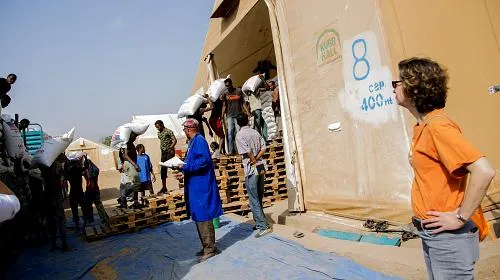CARE elevates the Ethiopian drought to Type 4 or “most severe” on its emergency scale
ATLANTA (Feb. 24, 2016) — A widespread drought is severely impacting Ethiopia, leaving millions of people without enough to eat. CARE this week classified Ethiopia as a “Type 4” crisis; the most severe on its emergency scale.
Ethiopia’s worst drought in 30 years is fueled by the El Niño weather pattern that has contributed to two failed seasonal rains last year – dangerous for a country where more than 80 percent of its population are farmers. In one of the most affected areas where CARE works, East Hararghe in the east, crop production fell by 70 percent last year.
The Ethiopian government and aid organizations like CARE have mobilized resources and are distributing food. But from the time of purchase, it takes four months to get food to those in need. This means that unless food is procured now, 10.2 million people will not have enough to eat from April onwards.
“We believe we can avert what would otherwise be catastrophic consequences for millions of people,” said Michelle Nunn, president and CEO of CARE. “But we must act quickly and fully resource this relief effort. We can’t act in the wake of disaster, we must prevent it. “
Nunn recently returned from East Hararghe where she met with families suffering from the drought, viewed a food distribution as well as a government-run clinic that treats malnourished women and children.
Ethiopian women and children are suffering in particular. According to the UN, there are currently 1.7 million children and pregnant and lactating women requiring specialist nutritional support in the country – a situation which is set to get worse in the coming months.
“Everywhere I travelled in Ethiopia, I was struck by the heavy load women were carrying- literally weighted down with water or firewood, with babies at their side or cooking, but always working. And yet the women I met were surviving on just one meal a day,” Nunn said.
Ethiopia is no stranger to drought. Over the last three decades the government has put in place several measures to cope with it. During seasonal dry spells, a safety net program provides millions of food insecure people with cash or food payments. This initiative, supported by CARE, aims to protect hard-earned savings and prevent people in drought affected regions from falling back into destitution.
CARE is currently supporting 500,000 people in Ethiopia with food aid, assisting over 150,000 children and mothers affected by malnutrition, rehabilitating water sources and enabling over 290,000 people to access safe drinking water in the current drought.
CARE is preparing to scale up assistance to more than 1 million additional people in the coming months, including critical seed and other livelihood assistance. CARE emergency assistance helps meet the immediate needs of the most vulnerable people – especially women and girls – affected by drought.
About CARE:
Founded in 1945, CARE is a leading humanitarian organization fighting global poverty. CARE has more than six decades of experience helping people prepare for disasters, providing lifesaving assistance when a crisis hits, and helping communities recover after the emergency has passed. CARE places special focus on women and children, who are often disproportionately affected by disasters. To learn more, visit www.care.org.
For Media Requests:
Nicole Harris, nharris@care.org , 404-735-0871

